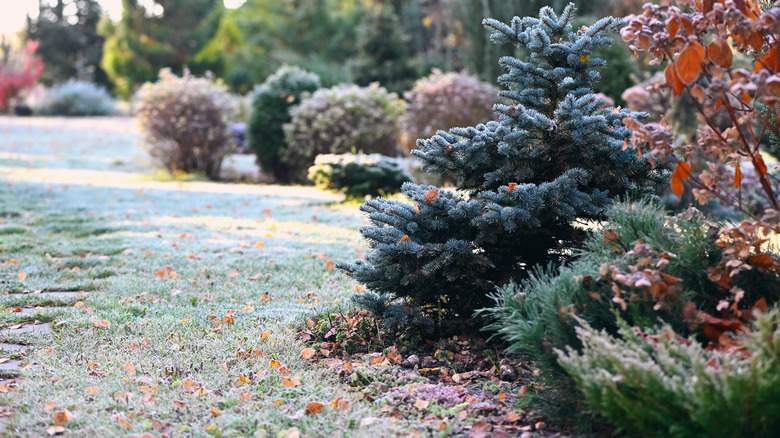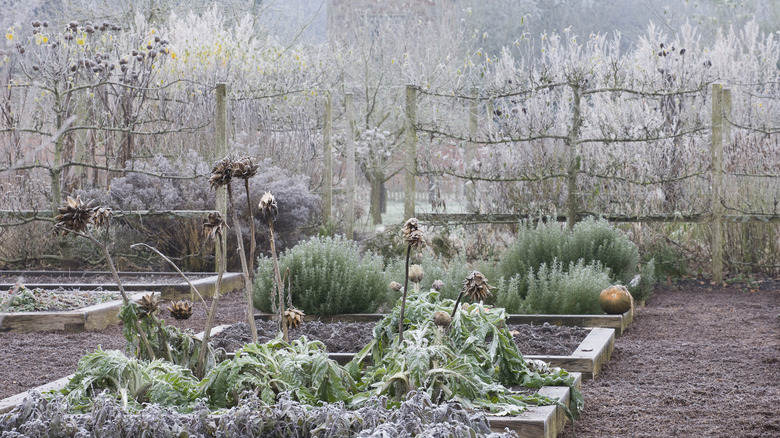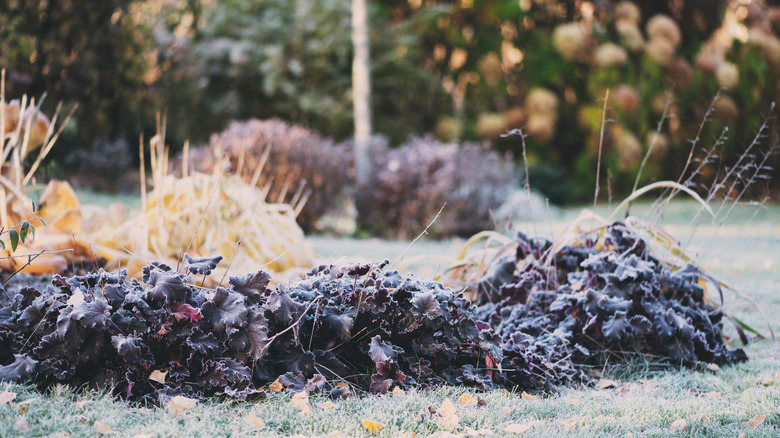What Is A Hard Frost, And What Does It Mean For Your Perennials And Annuals?
As days get shorter and colder, your garden begins to change and evolve, with annuals dying and some perennials beginning to go dormant. However, you may notice that even with temperatures dipping into the low 30s Fahrenheit, some of your summer and autumn plants still look fine and may even be thriving in the chilly weather. That's because many plants are moderately frost tolerant and able to continue flowering and growing until you have your first hard frost, sometimes called a "killing frost."
Frost can form even when air temperatures are in the high 30s Fahrenheit and well above freezing, thanks to lower temperatures closer to the ground combined with high humidity. While this light frost can kill tomatoes, impatiens, and other plants that require warmer temperatures to survive, many plants are largely unbothered by this. A hard frost or freeze, however, which involves the air temperature dropping below 28 degrees Fahrenheit for an extended period of time, often spells the end of your garden for the year, as it kills most annuals and often causes perennials to go dormant if they haven't already.
Annuals and hard frosts
While many cool-weather-loving plants, like sweet alyssums, can bloom all fall and even into winter as long as temperatures don't go too much below 28 degrees Fahrenheit, once temperatures are below this point for an extended period of time, you'll quickly see most of your cool-season annuals fade away. The same is true of many vegetables with some cold hardiness. While kale, spinach, and peas can thrive in temperatures in the low 30s, once temperatures reach the mid-20s, they are largely done growing and die.
You shouldn't necessarily pick all your vegetables before a hard frost, though. Many root vegetables, including carrots, beets, and parsnips, are fine to pick after a frost and even taste better if they have been exposed to colder temperatures. A few vegetables, including horseradish, can continue thriving even when temperatures repeatedly drop into the low 20s. Of course, if you aren't ready to stop gardening for the year and you want to extend your growing season, cold frame gardening, using row covers, and investing in some greenhouses are all great ways to do so.
Taking care of perennials in a hard frost
Many perennials become dormant in response to colder temperatures and shorter days and may have already begun this process well before a hard frost arrives. As long as you buy perennials that are recommended for your USDA hardiness zone, you shouldn't have any issues with your perennials during a hard frost in late autumn or early winter. Any perennials that can't survive these temperatures either should be moved to a protected location or, in the case of some tender bulbs and rhizomes, can be dug up and stored inside until spring.
One thing to keep in mind with your perennials during a hard freeze or frost is that repeated cycles of freezing and thawing can lead to heaving. This is when plants, or even rocks, are lifted out of the ground by the soil and water expanding and contracting from temperature shifts. This can easily damage roots, especially on shallowly planted perennials. Checking on your perennials, especially newly planted ones, and adding additional soil or mulch as needed should prevent your perennials from being seriously damaged by this phenomenon. Perennials like strawberries can also be covered to protect them from frost heaving.


